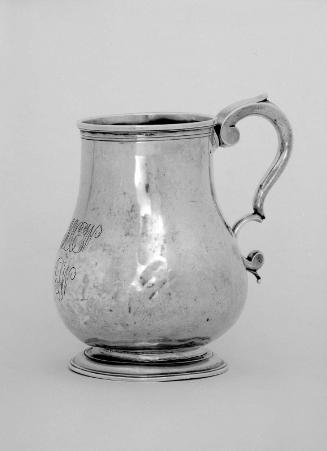Salt (one of a pair)
Small footed salts such as these were commonly made during the mid-1700s; they succeeded the low circular trenchers of the early 1700s. The cast trifid-foot arrangement found on the salts is also typical of creampots and chafing dishes made during the same period. The cast cabriole legs with “molded pads” and “pad feet” described by Kathryn C. Buhler are similar to those produced by Jacob Hurd during the 1740s and 1750s and bear a close resemblance to those made by Paul Revere (cat. no. 113). The Burt salt bowls are more rounded than the broad flat-bottom salts by Hurd. Despite an active career in Boston, Benjamin Burt made few salts; only about five are known.
This text has been adapted from "Silver of the Americas, 1600-2000," edited by Jeannine Falino and Gerald W.R. Ward, published in 2008 by the MFA. Complete references can be found in that publication.
1n.a., "Genealogy of the Sumner Family," NEHGS 8 (April 1854):128j, 128m-128o; Richard Frothingham, Life and Times of Joseph Warren (Boston: Little, Brown, & Company, 1865), pp. 545-46; William Sumner Appleton, Record of the Descendants of William Sumner, of Dorchester, Mass. 1636. (Boston: David Clapp & Son, Printers, 1879), pp. 13, 31.
2Samuel Bradlee Doggett, A History of the Doggett-Daggett Family, (Boston: Press of Rockwell and Churchill, 1894), pp. 415, 440-45.
3Doggett 1894, pp. 487-88, 547-48; Edward W. Hanson, "The Heards of Ipswich, Massachusestts," (Boston: typescript, 1986), New England Historical and Genealogical Society Library, pp. 211, 244. See Jamestown 1907 pp. 35, 49, 58-9, 65, for silhouettes, a sampler, a tea caddy and additional articles owned by the Sumner family and lent by Mrs. John Heard.











